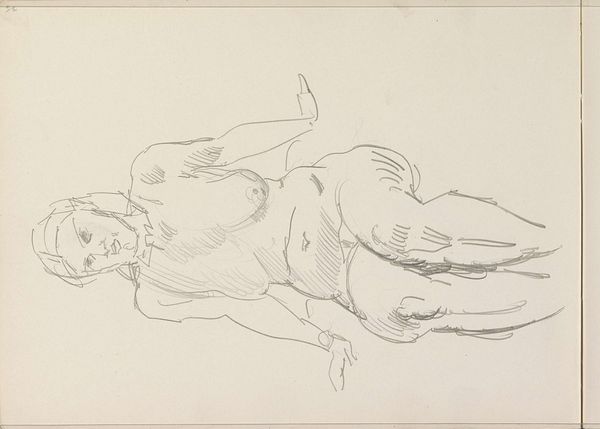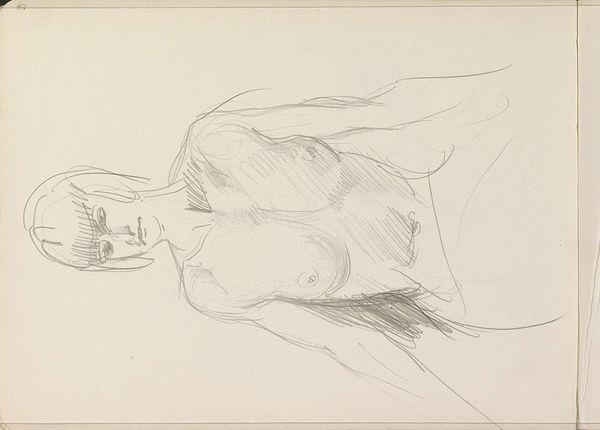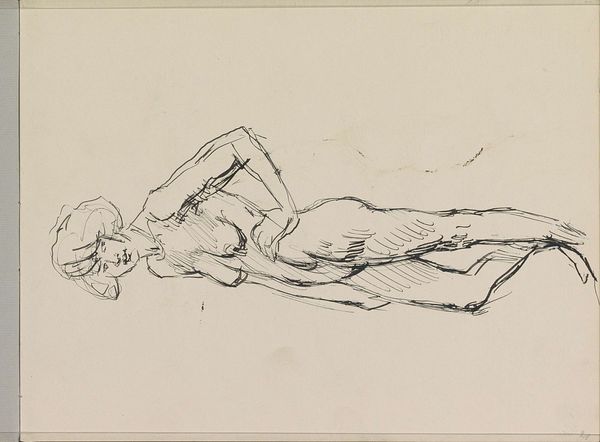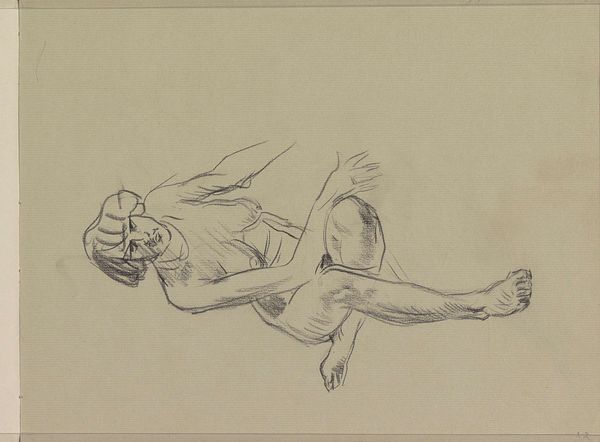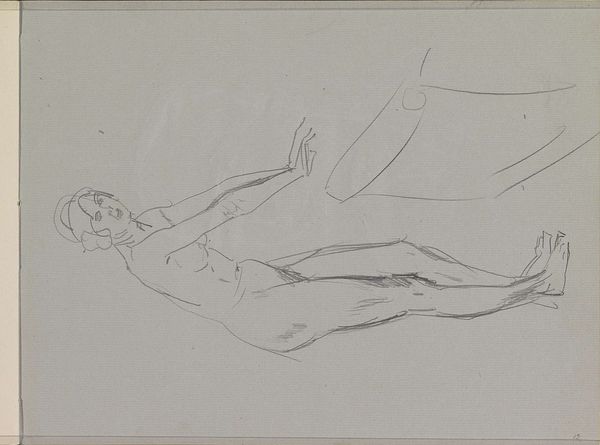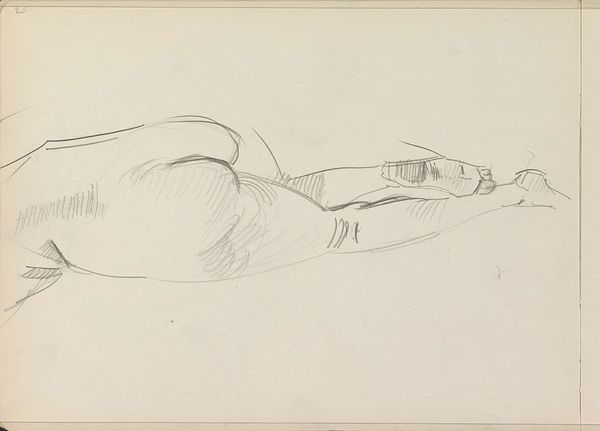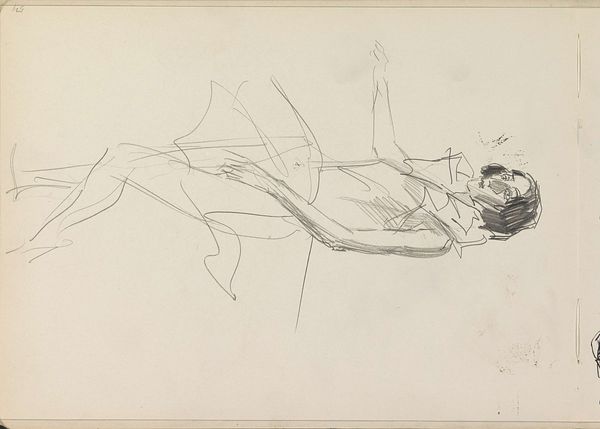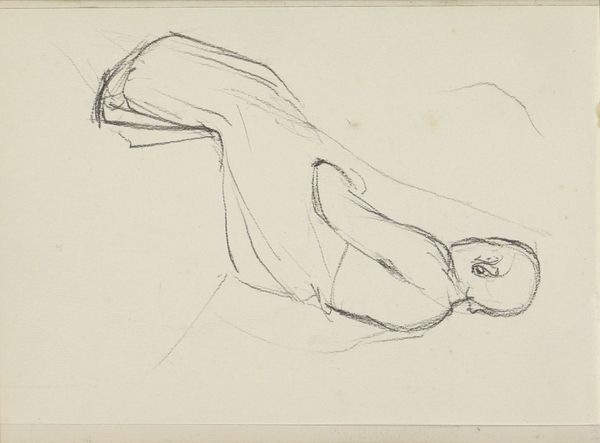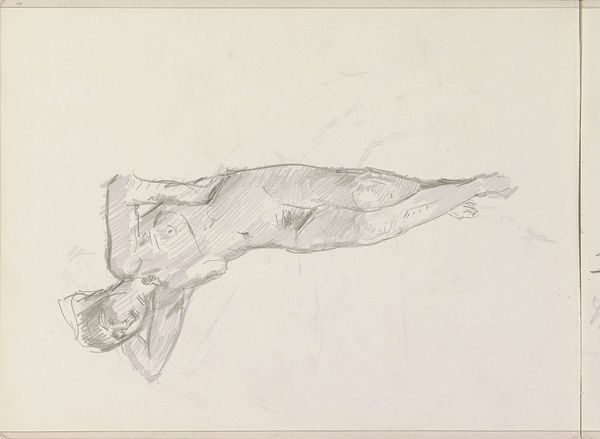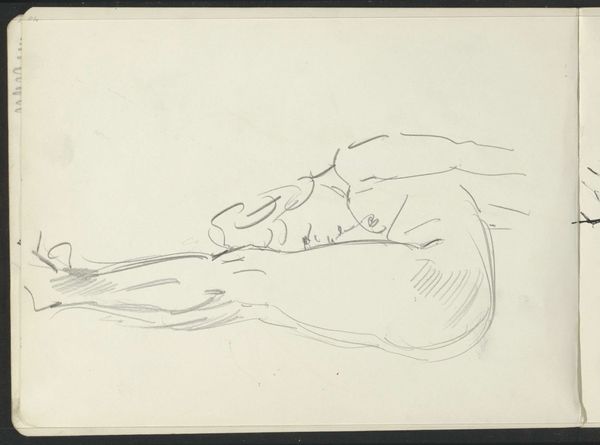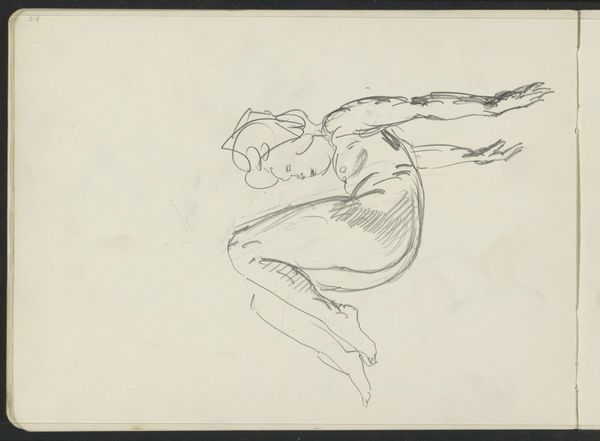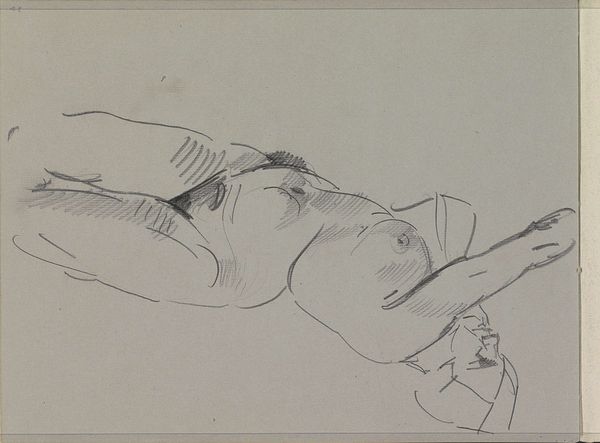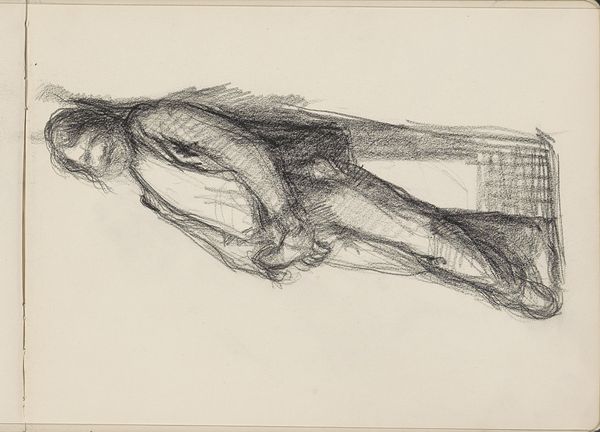
#
amateur sketch
#
light pencil work
#
pencil sketch
#
incomplete sketchy
#
personal sketchbook
#
idea generation sketch
#
sketchwork
#
ink drawing experimentation
#
sketchbook drawing
#
initial sketch
Copyright: Rijks Museum: Open Domain
Editor: This is Isaac Israels’ “Standing Female Nude,” which he made sometime between 1875 and 1934. It’s just a pencil sketch on paper, and it feels incredibly raw and immediate. What do you see in this piece? Curator: I see the human body as a vessel, carrying centuries of cultural projections and artistic interpretations. Notice the way Israels uses line here – fragmented, searching. Does that hesitancy suggest a broader uncertainty about the representation of the female form at the time? Is he questioning the traditional, idealized nude? Editor: That’s a really interesting point! I hadn’t considered the element of questioning. It just seemed like a quick study. Curator: Perhaps, but even a quick sketch can hold within it the seeds of cultural discourse. Consider the power of absence here – the areas *not* drawn, left to our imagination. What does that evoke for you? What memories, personal or cultural, does it unlock? Editor: The incompleteness makes it feel very personal, like glimpsing something private, not meant for public consumption. Curator: Precisely! And in that intimacy, we might find a subversion of the traditional, often objectified, nude. He is making choices, leaving certain features only gestured at and not defined with descriptive precision. Editor: So, it’s more than just a simple sketch, it’s a conscious act of reinterpreting a classic subject? Curator: I believe so. Israels uses the sketch, traditionally seen as preparatory, as the final form itself, which infuses it with meaning beyond its immediate appearance. This resonates, in a cultural memory sense, across generations of representation, almost an echo. Editor: I'm seeing it in a new light. Thank you! It's interesting how much meaning can be packed into something so minimal.
Comments
No comments
Be the first to comment and join the conversation on the ultimate creative platform.
